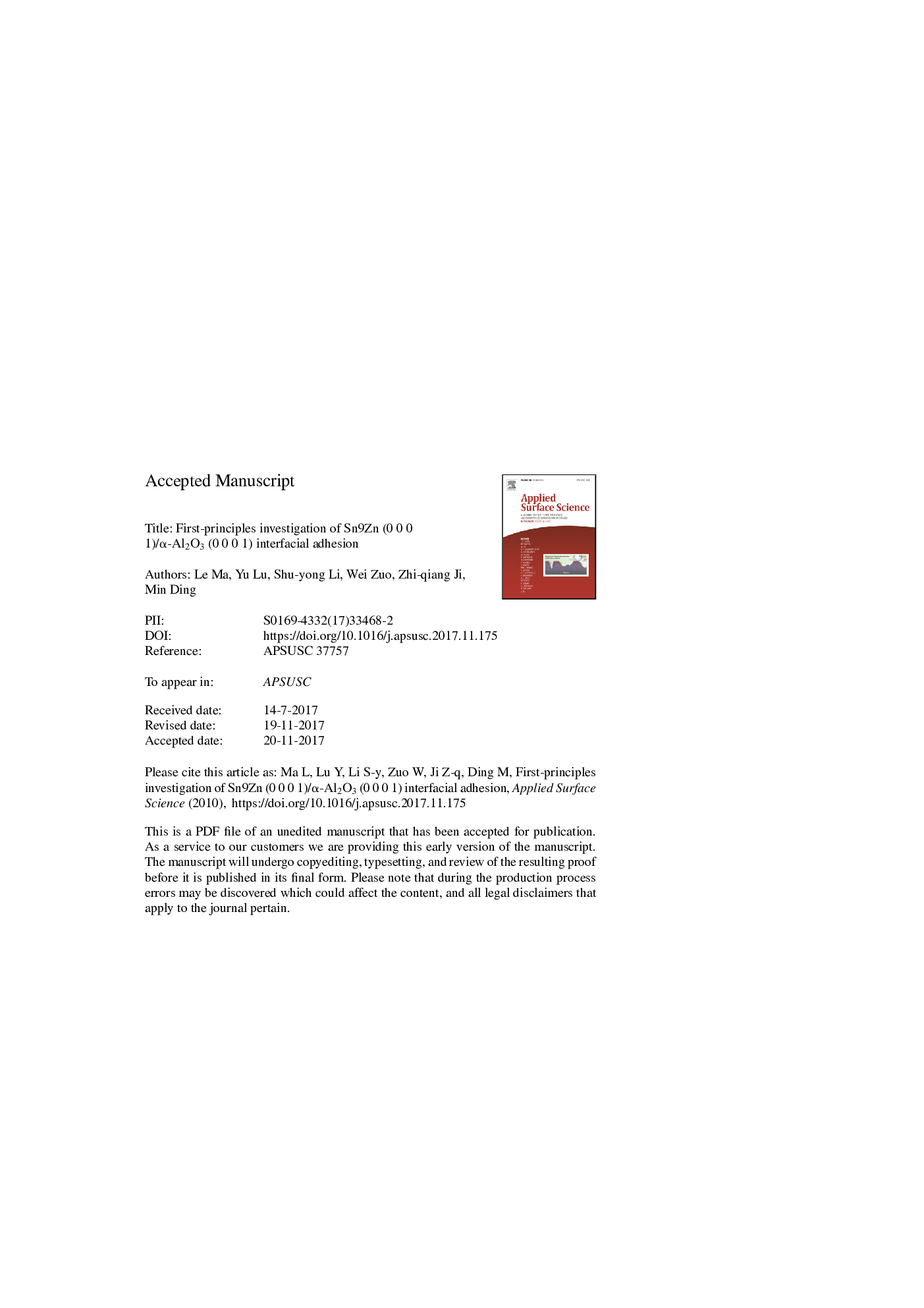| Article ID | Journal | Published Year | Pages | File Type |
|---|---|---|---|---|
| 7836188 | Applied Surface Science | 2018 | 33 Pages |
Abstract
First-principles calculations of the Sn9Zn (0 0 0 1)/α-Al2O3 (0 0 0 1) interface have been performed to systematically investigate the adhesion and interfacial electronic structure as well as bonding characteristics. The interfacial structures considered here with two types of initial condition: Al- and O-terminated interface with Zn atoms in different positions. Sn9Zn physisorption on the former substrate, accompanied by relative minor work of adhesion (â0.576âJ/m2), while stronger chemisorption on the latter one. The structure of Zn above O atom is found to be the energetically most favorable configuration with the largest Wad (â1.799âJ/m2) and the shortest interlayer distance (1.269âÃ
). The further studies of vacancy show that the wettability gradually improved as oxygen vacancy counts increase. There is no significant difference when removing two or more oxygen atoms: its value of Wad is â7.151âJ/m2 and â7.057âJ/m2, respectively. Removing one aluminum atom has been proved to be the most stable structure (Wadâ=ââ7.506âJ/m2). It can be concluded that the exists of vacancy is significant for the improvement of wettability.
Related Topics
Physical Sciences and Engineering
Chemistry
Physical and Theoretical Chemistry
Authors
Le Ma, Yu Lu, Shu-yong Li, Wei Zuo, Zhi-qiang Ji, Min Ding,
